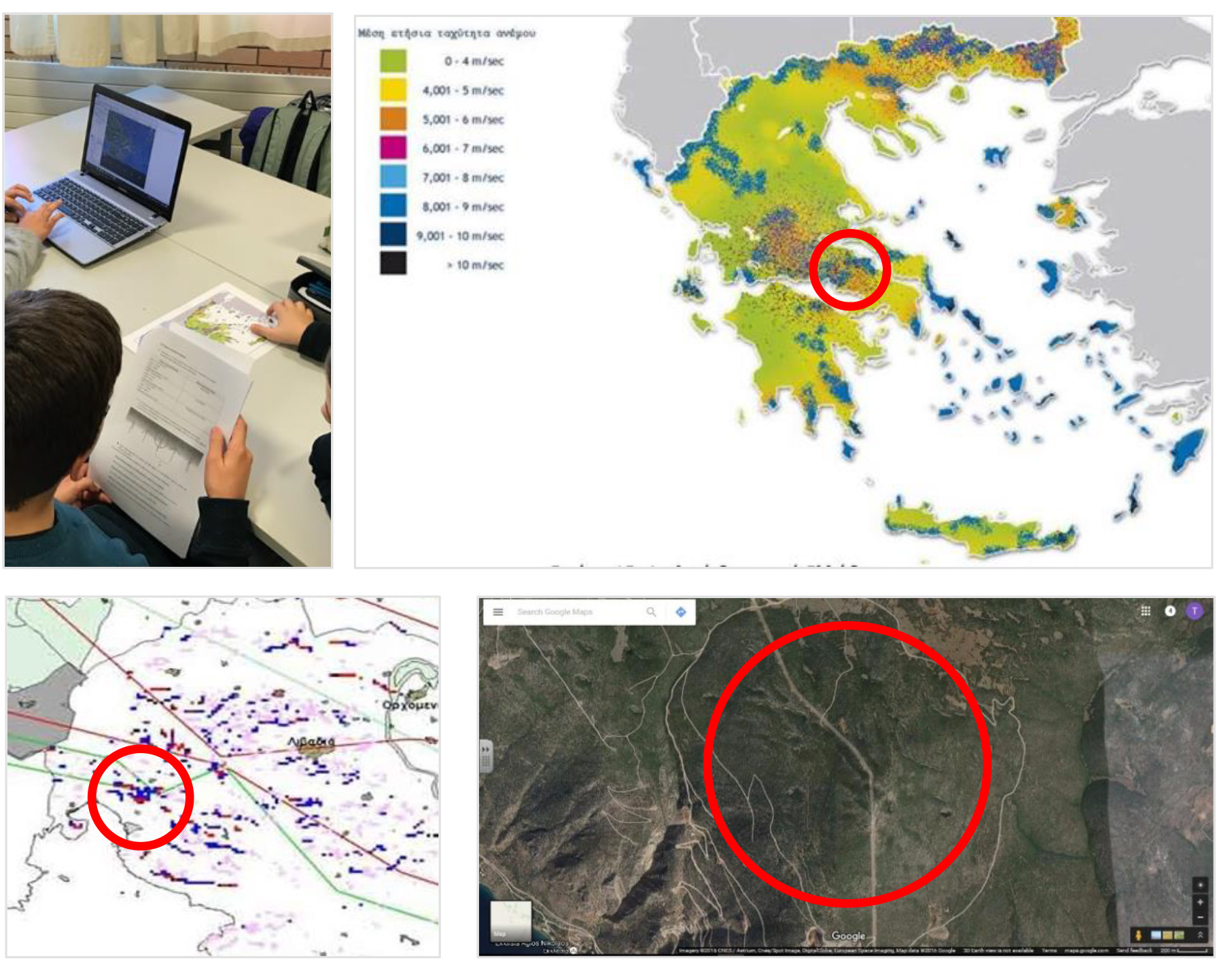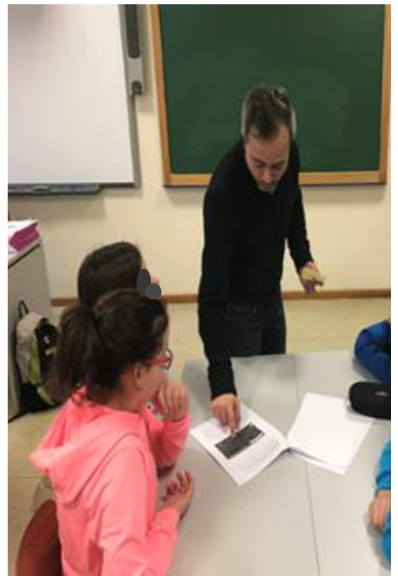The project started in 2017 in the private school of ELLINOGERMANIKI AGOGI (Greece) and continues until now with additions and modifications in accordance with the educational needs and goals of the school programming but also in line with the global trends and research interests in terms of the environmental and socio-economic sustainability issues.
The school of ELLINOGERMANIKI AGOGI follows for years an open schooling approach in which students serve as drivers for change towards a pro-environmental behavior upon real-world experimentation. Along with teachers, peers, families, scientists and other external stakeholders, they are engaged in intensive dialogue, mutual learning activities and knowledge exchange. As a result, the school has transformed to a living lab, an open innovation learning ecosystem, which is active in many areas of work and has proven impact to its participants.
The proposed project, developed and optimized by a group of teachers, experts and education professionals from different backgrounds, is an example, among others which run in the school, of how living labs works. It aims to inspire other students, teachers and education stakeholders to act collectively on innovative education solutions for sustainable development goals. Therefore, it is disseminated within the Education for Climate Coalition community hoping to serve as a starting point for reflection, discussion and exchange of ideas.
Until now, with the active participation of almost 1200 students (200 students/year of implementation) from the 6th grade of the primary school (12 years old), teachers, school headmasters, scientists/engineers and stakeholders, the project has succeeded to train teachers in various learning approaches, raise awareness through active participation to a real-life case study, bridge education with science, develop green skills and competences (critical, systems and exploratory thinking and problem framing) and prepare students to a key stage of their school life (last year of primary before move on to middle school) for the future challenges inside and outside of the school environment.
The design of the project is based in collaborative, experiential and practically oriented learning methods and approaches, interdisciplinary and cross-curricular activities with the ultimate goal to drive the participants to the green and digital transition. All the above include giving learners opportunities to develop problem-solving and collaboration skills, to foster critical thinking, to support positive action, to confront and reduce the fear and disempowerment that might experience in the face of the planetary crises based to scientific data.
It is also noticed that the topics addressed in this project-based activity, five years after its first implementation, are in line with the recommendations and initiatives proposed in June 2022 from the Greek Ministry of Education and Religious Affairs related to the Syllabus for the Environmental Education and Education for Sustainable Development in schools (see here).
Participants
The students, divided in teams, study the installation of an onshore or/and an offshore wind farm in Greece. To do this, they define the case, consider different criteria, gather information, generate possible scenarios, support, and evaluate their ideas.
The role of the teacher is to facilitate the procedure, help the students generate their own content related questions and guide the investigation that follows (inquiry-based learning approach).
At the end of the study, scientists/engineers cooperate with the students to examine the advantages and disadvantages of their decision, whether / how it can finally be implemented and the environmental benefits of the construction.
Researchers and developers have been contributing to the project through the years with use of various tools and approaches for succeed the best learning experience.
Teacher trainers also have been responsible for the upskilling and the training of the teachers.
Procedure
Phase 1: The onshore wind farm study as an educational tool to develop Green and 21st Century Learning Skills
The project aimed at developing green skills by exploring concepts relevant to Sustainable Development Goals (SDGs). Already since 2015, countries adopted the 2030 Agenda for Sustainable Development and its 17 Sustainable Development Goals (SDGs). Education and training are central to the achievement of the 2030 Agenda for Sustainable Development.
So, the project was the result of the need that had raised then for the development of green skills alongside with the development of 21st Century Learning Skills.
In the initial planning of the project, the steps followed by the students were:
1. Study of the wind farm development criteria:
- Wind Potential
- Distance from PPC energy transmission lines (PPC–Public Power Corporation)
- Layout and characteristics of the wind turbines
- Distance from areas of environmental and archaeological interest
- Road access of heavy equipment
- Distance from residential areas
2. Selection of a specific area for the development of the wind farm using different maps and considering the criteria that have been studied from step 1.

3. Selection of wind turbines (type and number) considering the average wind speed in the area and the distance that must exist between the wind turbines.


4. Calculation of the benefits of the contruction.
- Reduction of greenhouse gas emissions
- Saving of domestic conventional fuels
- Covering energy needs
5. Collaboration with scientists/engineers/ stakeholders for co-examine the advantages and disadvantages of their decision and whether / how it can finally be implemented.
Phase 2: The use of gamification techniques to the onshore wind farm study
After the first year of implementation, in the second phase of the project, an online virtual lab was developed using applied gaming and game analytics. The goal for using gamification in education (i.e., educators apply game design elements to an educational setting) was to make learning more engaging. The goal also for using game analytics was to adapting learning content to the personal needs and requirements of students. After students have chosen the area in which to install the wind farm, they are asked to make decisions in future scenarios of increasing or decreasing energy needs.

Phase 3: Moving forward – The school as a driver to green efficiency solutions based to nature
In 2021, the project took the next step, introducing a different approach to identify optimal offshore marine areas for wind farm development along with the detailed design of the wind turbines using biomimicry elements and constructing the wind farm to a marine area.
The goal was to introduce Nature-Based Solutions (i.e., solutions inspired and supported by nature and ecosystems) along with multi-criteria decision making to the school context. As opposed to purely technological solutions, Nature-Based solutions are cost-effective, simultaneously provide environmental, social and economic benefits, and help build resilience to climate change.

In this phase the steps followed by the students were:
1. Study of the offshore wind farm development criteria:
- Offshore Wind Potential
- Bathymetry
- Distance from harbors and the onshore network junctions
- Marine protected areas (NATURA network)
2. Design wind turbines considering biomimetic adaptations and choosing features that increase efficiency and decrease the cost, offering enough energy to cover as many houses as possible (using a gamified digital app).

3. Selection of specific island(s) for electrification from the developed wind farm considering:
- Which area it has already selected for the construction of the offshore wind farm based on the criteria.
- The results from the design of the wind turbine.
- Changes in energy needs on several islands during the tourist season.
4. Collaboration with scientists to co-examine the advantages and disadvantages of their decision, whether / how it can finally be implemented, the benefits of using Nature-Based Solutions in the design of the wind turbines and the environmental benefits of the project.



Please log in or sign up to comment.